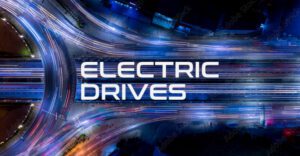- Following the announcement of the government’s £30 million Depot Charging Scheme earlier this month, Daimler Truck UK has called on more to be done to support the transition to electric transportation.
- The £30 million package is predicted to support the installation of over 3,000 van and 200 HGV charging points, leaving more work to be done to enable a widespread transition to electrified logistics.
- Publicly accessible truck charging outside of depots is already being supported through Daimler Truck’s joint venture from TRATON GROUP and Volvo Group, Milence.
What more needs to be done to stimulate electric truck uptake in the UK?
The call for more action led by Daimler Truck UK’s Head of Future Sustainability James Venables comes just weeks after the government announced a £30 million Depot Charging Scheme, as part of a wider £63 million charging package. Under this scheme, which runs until late November, the government is offering grants of up to £1 million per site to cover 75% of the cost of charging infrastructure required for electric trucks, buses, and coaches.
With the scheme’s financial limits and relatively short running term, Daimler Truck UK has outlined where else businesses can assist in the transition to zero-emission logistics. A change in working patterns for HGVs can also ease the transition to electric, ensuring that trucks can be charged up whilst they would already be stationary, rather than having to implement additional breaks into a sector where on-time deliveries are crucial.
It’s not just depot charging that will play a key role, but public truck charging infrastructure too. Daimler Truck is one of the three businesses behind joint public truck charging venture Milence, which is also backed by TRATON GROUP and Volvo Group. This CPO is rolling out public truck charging infrastructure right across Europe, including in the UK, where the first Milence charging hub opened at the Able Humber Port back in March. Milence is also in the process of rolling out its faster Megawatt Charging System, which allows charging power of up to 1,440kW. This can take the typical electric truck from a 20-80% state of charge in under an hour, allowing these hubs to complement existing mandated driver breaks.
James Venables, Head of Future Sustainability at Daimler Truck UK, spoke of the need for strong public eHGV infrastructure:
“Many of our customers plan to have depot charging facilities installed, but better public infrastructure – the right charging points, in the right places – will help us continue to build confidence and is a key enabler for the switch to sustainable transportation.
In addition to the technical and power needs, public charging should be cost competitive. It also needs to work intelligently – for example, allowing drivers to pre-book and view availability of the network in advance of their journey. All the factors need to be considered when designing a charging network that will allow operators to run electric trucks at maximum efficiency – and to encourage people to make the switch.”


